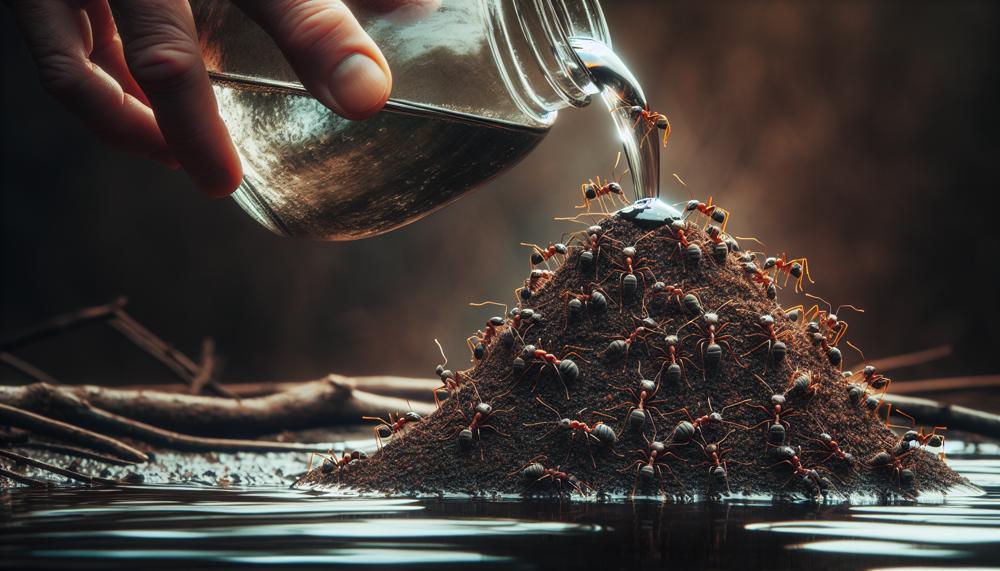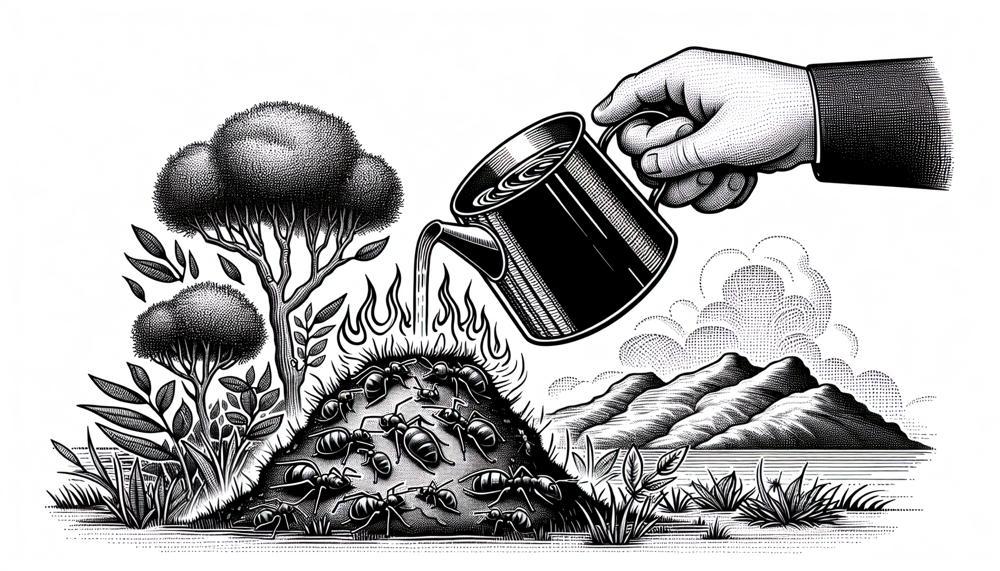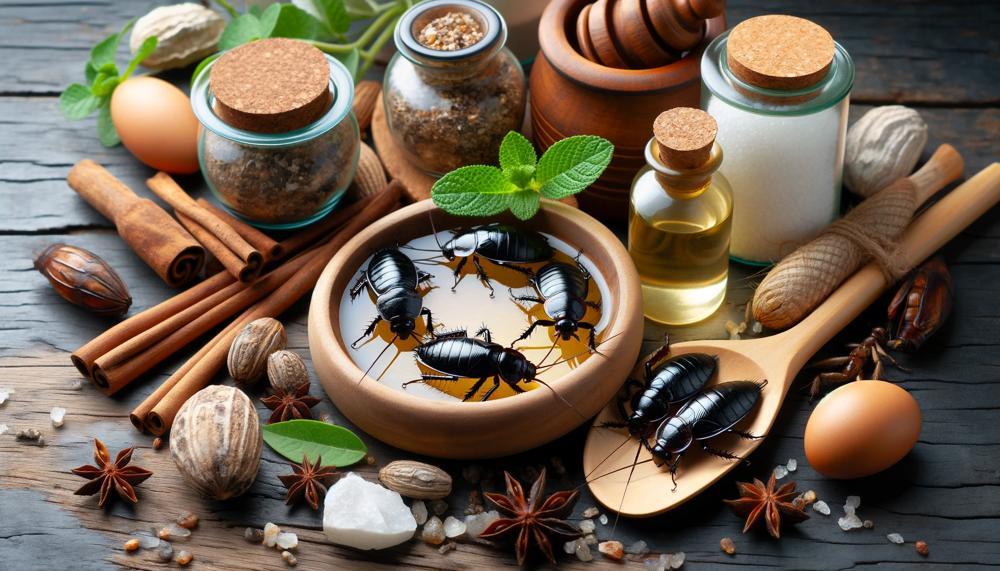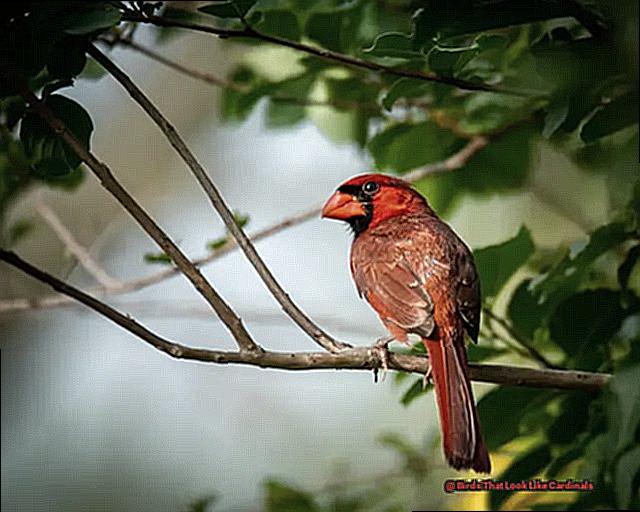Tired of those pesky ant hills taking over your yard? Sick of using harsh chemicals to get rid of them? Well, fear not because the solution may be as simple as boiling water. That’s right, something as ordinary as hot water can be a game changer in your battle against ants. Not convinced yet? Let me break it down for you.
First and foremost, boiling water is a natural and eco-friendly alternative to chemical pesticides. No need to worry about harming the environment or any innocent creatures roaming around your yard. And let’s not forget about your wallet – this method is cost-effective and requires no additional tools or products.
But how does it work? The heat from the boiling water destroys the ant colony’s structure and kills the ants instantly. It’s like a one-two punch that leaves those pesky critters with no chance of survival. Plus, unlike chemical pesticides, this method is safe for children and pets, making it a worry-free option for families.
And here’s the best part – you probably already have everything you need in your kitchen to get started. It doesn’t get much more convenient and accessible than that.
So, say goodbye to expensive and harmful pest control methods and hello to a simple yet effective solution – boiling water. Keep reading to learn more about this natural remedy and how it can help you win the war against ant hills in your yard.
Table of Contents
What is an Ant Hill?
An ant hill is a complex structure crafted by ants to serve as their abode and stronghold. These hills are created by excavating soil and constructing intricate tunnels and chambers beneath the surface. They can be found in lawns and gardens, and although they may not be visually appealing, ants play a vital role in the ecosystem by aerating the soil, aiding in decomposition, and controlling pests.
But why do ants devote so much time and effort to building these hills? The primary reason is for shelter and protection. Ants are social insects that live in colonies, and the ant hill acts as their main base where they can reside, reproduce, and store food. The tunnels and chambers provide a safe haven from predators and harsh weather conditions. Moreover, the mounded shape of the hill helps regulate temperature and humidity within the colony.
Different ant species may inhabit lawns, each with their own unique characteristics and behaviors. Some may construct their hills on open ground, while others prefer to build under objects like rocks or logs. Certain ants, such as fire ants, can pose a threat to human health with their painful stings.
To effectively manage ant hills in lawns, it is crucial to understand their behavior and what attracts them to the area. Proper maintenance practices, like eliminating food sources and reducing moisture, can discourage ants from constructing hills. Biological control agents such as birds or other insects can also aid in keeping ant populations in check without using harmful chemicals.
If necessary, chemical control methods should be used with caution to minimize harm to other organisms. Home remedies like vinegar solutions or soap sprays can be effective for minor infestations, but for persistent ant hills, professional pest control services may be required.
Comprehending the concept of an ant hill and why ants build them is critical for successful management in lawns. It requires a comprehensive approach that takes into account the ants themselves, utilizes various control methods, and respects the environment.
What Types of Ants make Ant Hills?
There are various species of ants that are known for constructing ant hills, such as Formica ants, Yellow Meadow Ants, Fire Ants, Harvester Ants, Pyramid ants, Argentine ants, Allegheny mound ants, and Texas leafcutter ants. Each of these types has distinct characteristics and behaviors that contribute to the formation of anthills.
Formica ants are renowned for building large, dome-shaped anthills in open areas. These ants are commonly found in forests and woodlands, and their anthills can grow up to 3 feet tall.
Yellow Meadow Ants also create large anthills, but they tend to be flatter and more scattered. They are frequently found in grassy areas and their anthills can serve as a natural fertilizer for surrounding plants.
Fire Ants are infamous for their painful stings, but they also construct large mounds of soil that can be a nuisance in yards and gardens. Their anthills can be distinguished by their irregular shape and reddish hue.
Harvester Ants are known for constructing well-structured conical anthills that can reach up to 18 inches in height. They are typically found in dry, open areas such as deserts and grasslands.
Pyramid ants build large pyramid-shaped anthills that can grow several feet tall. They are commonly found in warm, arid climates and their nests have a unique “concrete-like” appearance.

Argentine ants are a widespread species known for creating intricate networks of anthills. These ants often build their nests under rocks, pavement, and other structures and can be challenging to eliminate.
Allegheny mound ants construct large anthills with multiple entrances that can reach over 2 feet in height. These anthills have a distinctive crater-like shape and are often found in wooded areas.
Texas leafcutter ants are known for their impressive underground colonies which can house millions of individuals. Their anthills are typically found in open areas and can damage plants by cutting and harvesting leaves.
Overall, it is essential to properly identify the type of ant causing issues in order to effectively manage and control their populations.
Getting Rid of an Anthill
Ant hills can be a pesky problem for many homeowners, and the solution isn’t always straightforward. While using boiling water to eliminate anthills may seem like a simple and cost-effective method, it may not always be as effective as it seems. Let’s explore the pros and cons of this approach.
Firstly, boiling water can be a safe and inexpensive way to get rid of ants. It can easily kill a large number of them and is a quick and easy solution for small infestations or single anthills. However, its effectiveness may vary depending on the type of ant species and the size and location of the anthill.
For instance, ants like fire ants have a deep and complex nest structure, making it challenging for boiling water to reach the queen. This method may only temporarily disrupt the colony and may not completely eliminate it. On the other hand, smaller and shallower anthills, like those built by pyramid ants, can be effectively destroyed with boiling water as it can penetrate deeper into the nest and kill the queen.
Additionally, using boiling water may not be suitable for large infestations or for anthills located near sensitive areas like gardens or flower beds. In these cases, other methods such as baiting or applying insecticides may be more effective and safer.
Table: Pros and Cons of Ant Hill Elimination Methods

| Method | Pros | Cons |
| Boiling Water | – Safe and cost-effective
– Kills a large number of ants – Quick and easy solution |
– May only temporarily disrupt colony
– Not suitable for large infestations – Not effective for all ant species – May not reach queen – Not suitable near sensitive areas |
| Baiting | – Can effectively eliminate entire colony
– Easy to use – Can target specific ant species |
– May take longer to see results
– Can be more expensive – Requires proper placement of bait |
| Insecticides | – Can quickly kill ants
– Can be effective for large infestations – May have residual effects – Can target specific ant species |
– May be harmful to humans and pets
– Can be expensive – May require multiple applications |
While using boiling water may seem like a simple and effective solution for getting rid of ant hills, it may not always be the best option. Depending on the type of ants and the size and location of the anthill, this method may only temporarily solve the problem or may not work at all.
What Do I Do if I have Multiple Anthills?
Eliminating multiple anthills can be a tedious and costly task, but boiling water offers a simple and natural solution without the use of harmful chemicals. However, its effectiveness may vary depending on the type of ants and the size and location of the anthill, making it not always the best option.
To effectively get rid of multiple anthills using this method, follow these steps:
- Identify the anthills: Begin by locating all the anthills in your yard or garden. Look for small mounds or piles of earth with tiny holes in the center, which are usually the entrance to the colony.
- Boil water: Bring a pot or kettle of water to a rolling boil on your stove.
- Add dish soap: For enhanced results, mix a few drops of dish soap into the boiling water. The soap will help break down the ants’ exoskeletons, making it easier for the water to penetrate into the colony.
- Proceed with caution: If you are dealing with aggressive ants like fire ants, approach the nest carefully. Wear protective clothing such as closed-toe shoes, long pants, and long sleeves to avoid getting stung.
- Pour boiling water: Slowly walk to each anthill with the boiling water and pour it directly into the center of the colony. You can use a funnel to ensure that all the water reaches inside.
- Repeat as needed: Check back after a few days and repeat this process if necessary. Some larger colonies may require multiple applications before they are completely eliminated.
It is important to note that boiling water may not be as effective for larger or deeper anthills as it may not reach all parts of the colony.
In such cases, other methods like bait or insecticides may be necessary to get rid of multiple anthills.
Also, be cautious when pouring boiling water onto anthills as it can harm surrounding plants.
| Pros | Cons |
| – Simple and cost-effective | – May not be effective for larger or deeper anthills |
| – Natural method without using chemicals | – May harm surrounding plants |
| – Can be repeated as needed | – Not suitable for dealing with aggressive ants |
Boiling water can be a useful method for getting rid of multiple anthills in your yard or garden. However, it may not work for all types of ants and may require multiple applications.
How Can I Prevent Future Ant Hills from Forming?
Preventing the formation of future ant hills can be a daunting task, but there are several effective methods to consider. These include maintaining a clean and debris-free yard, sealing any potential entry points, using natural deterrents, and understanding the limitations of boiling water as a long-term solution. It is crucial to take proactive measures in order to prevent future infestations and keep your yard free of pests.
One of the key methods for preventing ant hills is to keep your yard clean and free of debris. This includes regularly mowing your lawn, removing any dead plants or leaves, and keeping your outdoor areas tidy. Ants are attracted to clutter and debris, so keeping your yard clean can help discourage them from making a home in your yard.
Another important step in preventing ant hills is to seal any potential entry points into your home or yard. This includes sealing cracks in walls or foundations, securing screens on windows and doors, and repairing any damaged weather stripping. Ants can easily enter through small openings, so it’s important to seal these off to prevent infestations.
Using natural deterrents can also be an effective method for preventing ant hills from forming. This includes planting certain types of plants in your yard that ants do not like, such as mint, lavender, or rosemary. You can also sprinkle cinnamon or coffee grounds around potential entry points to deter ants from entering.
Boiling water is often used as a quick solution for getting rid of existing ant hills, but it may not be effective in preventing future ones. This is because boiling water only kills the ants that are present at the time, and does not address the root cause of the infestation.
It’s important to consider other long-term solutions in addition to boiling water.
Conclusion
In conclusion, boiling water can be a powerful and environmentally-friendly weapon against ant hills in your yard. Not only is it cost-effective, but it also poses no harm to children or pets.
The intense heat of the water destroys the ants’ colony and kills them instantly, providing a one-two punch against these pesky creatures. And the best part? You probably have all the necessary tools in your kitchen.
However, keep in mind that boiling water may not work for every type of ant or larger infestations. In such cases, alternative methods like baiting or using insecticides may be necessary. It’s also crucial to take preventative measures to avoid future ant hills by keeping your yard clean and debris-free, sealing entry points, using natural deterrents, and understanding the limitations of boiling water as a long-term solution.
By following these tips, you can effectively win the battle against ant hills without harming the environment or breaking the bank.





